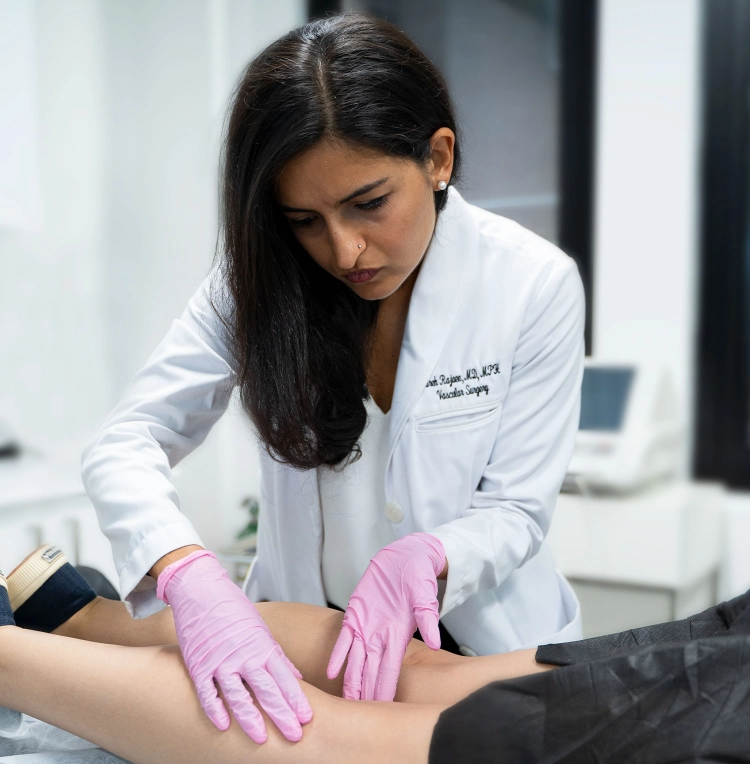
Is There a New Breakthrough in Varicose Vein Treatment?
Varicose veins are a common condition that affects millions of people worldwide. These swollen, twisted veins often appear on the legs and can cause discomfort, pain, and even complications if left untreated. Fortunately, advancements in medical technology have led to the development of new treatments that offer improved outcomes and fewer side effects compared to traditional methods. So, what is the latest treatment for varicose veins, and how does it compare to existing options?
Understanding Varicose Veins and Their Treatment Options
Before delving into the latest treatment options, it’s essential to understand what varicose veins are and how they are typically treated. Varicose veins occur when the valves within the veins become weak or damaged, leading to poor blood circulation and the pooling of blood in the veins. This, in turn, causes the veins to swell and become visible beneath the skin’s surface.
Historically, treatment for varicose veins has primarily involved surgical procedures such as vein ligation and stripping, which involve physically removing or tying off the affected veins. While effective, these procedures can be invasive, painful, and require a significant recovery period.
Over time, less invasive alternatives such as sclerotherapy and laser therapy have emerged. These treatments involve closing off the affected veins using chemicals or heat, respectively, with the goal of rerouting blood flow to healthier veins. While these methods have shown promise, they may not be suitable for all patients and can still result in discomfort and downtime.
The Latest Breakthrough: Endovenous Ablation Therapy
One of the most significant advancements in varicose vein treatment in recent years is endovenous ablation therapy. This minimally invasive procedure uses heat or cold energy to seal off the affected vein from the inside, effectively closing it off and redirecting blood flow to healthier veins.
There are two primary types of endovenous ablation therapy: radiofrequency ablation (RFA) and endovenous laser ablation (EVLA). Both procedures involve inserting a catheter into the affected vein under ultrasound guidance, followed by the delivery of either radiofrequency or laser energy to heat and seal the vein shut.
Benefits of Endovenous Ablation Therapy
Endovenous ablation therapy offers several advantages over traditional surgical methods and other minimally invasive techniques:
- Minimally Invasive: Unlike traditional vein stripping surgery, endovenous ablation therapy requires only a small incision and can often be performed on an outpatient basis with minimal downtime.
- High Success Rate: Studies have shown that endovenous ablation therapy is highly effective in closing off varicose veins, with success rates exceeding 90% in many cases.
- Less Pain and Discomfort: Because endovenous ablation therapy targets the affected vein directly, it typically results in less pain and discomfort compared to traditional surgery or sclerotherapy.
- Faster Recovery: Patients undergoing endovenous ablation therapy can typically return to their normal activities within a few days, compared to weeks of recovery time required for traditional surgery.
- Reduced Risk of Complications: The minimally invasive nature of endovenous ablation therapy reduces the risk of complications such as infection, scarring, and nerve damage associated with traditional surgical procedures.
- Improved Cosmesis: Endovenous ablation therapy often leads to better cosmetic outcomes, with smaller incisions and less scarring compared to traditional surgery.
Is Endovenous Ablation Therapy Right for You?
While endovenous ablation therapy offers numerous benefits for the treatment of varicose veins, it may not be suitable for everyone. Factors such as the size and location of the affected veins, overall health, and medical history will need to be considered when determining the most appropriate treatment approach.
If you are struggling with varicose veins and seeking relief, it’s essential to consult with a qualified vascular specialist who can evaluate your condition and recommend the most suitable treatment option for your needs. With the latest advancements in technology and treatment techniques, relief from varicose veins is more attainable than ever before.





Leave Your Comment